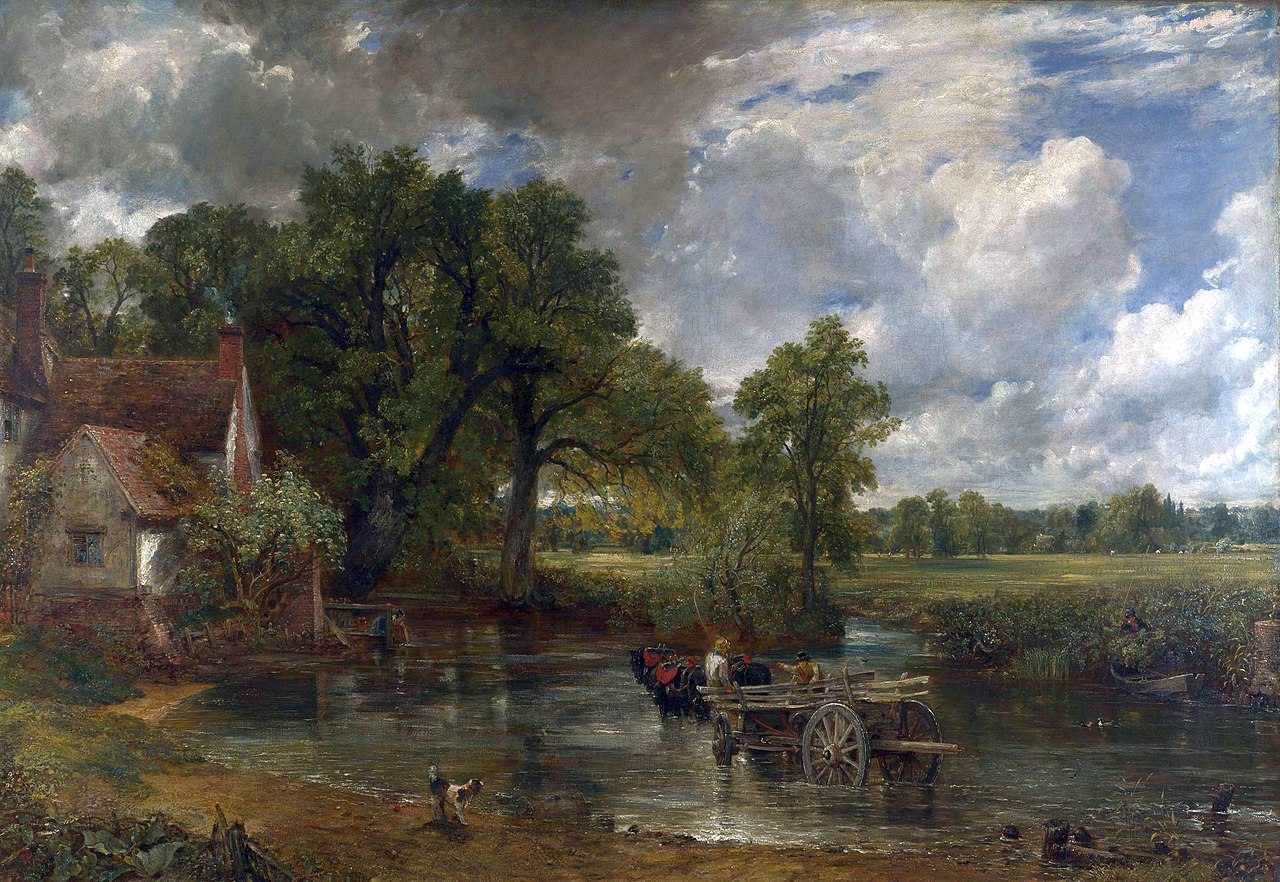(Disclaimer: this is very English-centric, being an etymology of English words).
*lendh + (s)kep to "landscape"
The word "landscape" developed in the English language from "landscap," or region, which had come into being by popping "-scap" (-ship, condition) onto "land." "Landscape" first got its terminal "e" to describe a painting of natural scenery.
 |
| The Haywain by John Constable, finished in 1821. Hosted by Wikipedia. |
The meaning of "landscape" as landscape architecture was getting started as a profession was pretty strongly in the realm of painters. For example, John Claudius Loudon wrote on "landscape gardening" in his Encyclopaedia of Gardening in 1822:
Music, poetry, and painting, are the principal imitative arts; to these has been lately added, landscape-gardening, an art which has for its object the production of landscapes by combinations of the actual materials of nature, as landscape-painting has for its object their imitation by combinations of colors. Landscape gardening has been said 'to realise whatever the fancy of the painter has imagined,' (Girardin). (p. 1154, if you're interested)"Landscape" wasn't defined more generally as "a tract of land with its distinguishing characteristics" until 1886 (almost half a century after Loudon's death). Loudon's early definition has clear ties to the Picturesque style, which held strong well into the inception of landscape architecture.
 |
| Rivenhall Place as reimagined by Humphrey Repton, John Claudius Loudon's example of landscape gardening from his 1822 edition of the Encylopaedia of Gardening. |
Part of the heritage of landscape architecture is landscape gardening. Landscape gardeners imitated paintings which were were beautiful because they imitated nature (more on this nonsensical arrangement, and its associated drama, in another post). Loudon even went on to say that landscape gardening can never be as beautiful as a landscape painting: "When all this [landscape gardening] is done, it will be a scene gravely inferior in beauty to the imitative creation of a painter from the same ground-work and materials..." Blech.
Though this silly hierarchy is irksome, what's more annoying is that Loudon described the ideal that a designed landscape should strive for (but can never attain) as a two-dimensional, stagnant representation of an outdated idea of what nature is, meant to be observed at a distance. No wonder landscape gardeners were bound to fail. It's hard to squeeze the landscape-- ever-changing, adaptive, and inhabitable in space-time-- into that box. This legacy is terrible, but don't you think it persists in expectations for the aesthetics and maintenance of landscapes even today (lawns, anyone?).


